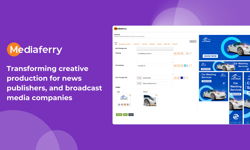
The last few years have thrown significant challenges at the digital advertising industry and, whether you’re a brand, advertiser or publisher, addressing these challenges as they present themselves can often feel like an interminable game of Whac-a-mole. Consumer privacy has – quite rightly – become a huge topic of concern. The arrival of Apple’s App Tracking Transparency policy in 2021 caused shockwaves through the industry that still resonate today, and the impending demise of the cookie will make it even harder for advertisers to target their audience using data.
Clearly, a new approach is needed for digital advertising. The good news is there are exciting alternatives for publishers as the privacy-first era rides towards us over the horizon, and there’s no doubt that companies can prosper in this new environment.
The whole is greater than the sum of its parts
Firstly, it’s critical that advertisers focus on the fundamental truth that a single variable doesn't drive campaign success. Marketing success is built on integrating multiple elements and aligning them to a campaign goal. When it comes to success, the whole is greater than the sum of its parts. And it’s this philosophy that will help the industry achieve its goals, regardless of audience, sector or KPIs. The philosophy is built on three pillars that act as a framework for building successful campaigns.
The first pillar is context. The latest, cutting edge technology understands the true context of any digital environment – including words, images, video, audio and other metadata – to interpret the real meaning of every environment to allow precision targeting. The advent of the digital media industry changed so much because data made audience targeting so easy, but as the third-party cookie goes offline we’re seeing the return of an old friend: contextual advertising… but not quite as we know it. Technological advancements have made contextual an extremely powerful tool for publishers, and its ability to serve appropriate ads to pre-engaged audiences without the use of personal data is game-changing.
The second pillar is creativity, and ensuring ads are delivered through a dynamic, engaging and memorable creative that enhances the environment in which it appears. High impact advertising is doing this better for publishers than any other format, and get significantly more attention than standard banner ads.
Finally, there's measurement, or more specifically, understanding if an ad captures consumer attention. This allows marketers to prove contextual advertising relevance and effectiveness by capturing a person’s interest in the ad at that moment. Attention as a form of measurement has shown to be three times better at predicting campaign outcomes than viewability, and is a highly detailed, accurate method of measuring ad success.
Technological advancements have made contextual an extremely powerful tool for publishers
A fresh start
These changes that we’re experiencing are an opportunity for the industry to reset approaches and attitudes. Many of today’s advertising issues for publishers stem from the fact that people don’t want to be tracked online. And while multiple approaches are being developed to help brands navigate the changes, one of the key ones - ID identifiers - still has an element of tracking individuals at its core.
We need to be mindful of the environment we operate in, and publishers and tech companies should ask themselves this critical question: is what I'm doing helping deliver ethical and acceptable targeting in line with consumers’ needs?
This is why contextual targeting is so relevant. Matching the context of a webpage to the content of an ad delivers the targeted advertising brands want. It removes brand safety fears by focusing on environments supportive to their values, while protecting consumer privacy by avoiding the use of behavioural data. And brands are going to stick with publishers they believe provide a premium, safe space for their ads.
To save advertising, we must all make a fundamental shift away from the current way of doing business, be sensitive to consumers' needs, and adopt privacy-first solutions. Although change is difficult, these are exciting times. With growing data privacy regulations and the deprecation of the cookie, the industry has a real opportunity to refocus its whole advertising approach to make it more relevant and engaging, and to rebuild consumer trust at the same time.
Matching the context of a webpage to the content of an ad delivers the targeted advertising brands want.

About us
GumGum is a contextual-first global advertising technology company that captures people’s attention, without the use of personal data. We believe that a digital advertising ecosystem based on understanding a consumer’s active frame of mind rather than behaviour builds a more equitable and safer future for consumers, publishers and advertisers alike. Founded in 2008, GumGum is headquartered in Santa Monica, California and operates in 19 markets worldwide. For more information, visit gumgum.com.










